February 20, 2024
Best Time to Visit Ayodhya – A Complete Guide
CM Content Team
Best Time to Visit Ayodhya – A Complete Guide
Ayodhya in Uttar Pradesh is one of India’s most revered spiritual destinations. It holds deep significance in Hindu mythology as the birthplace of Lord Ram. This ancient city is on the banks of the Sarayu River and is a centre of devotion, culture, and history. Ayodhya attracts pilgrims and travellers from across the world with its stunning temples, ghats, and sacred sites.
The best time to visit Ayodhya depends on what you’re looking for—pleasant weather, vibrant festivals, or a peaceful getaway. While winter provides the most comfortable climate for sightseeing, the grandeur of festivals like Diwali and Ram Navami makes certain months extra special for visitors. When travelling to Ayodhya, the best time to visit should be based on the weather, cultural events, and overall travel experience.
In the following sections, we’ll explore Ayodhya in summer, monsoon, and winter, discussing the pros and cons of each season. Additionally, we’ll highlight major festivals and events that could influence your travel plans. Finally, we’ll introduce the best place to stay in Ayodhya for a memorable and comfortable stay—the Club Mahindra Praveg Tent City Ayodhya Brahma Kund Resort.

Recently, this sacred city in Uttar Pradesh featured prominently in the news as the Ram Mandir consecration was held. Due to its profound association with mythology, the city holds an important place in the hearts and minds of people belonging to
the Hindu religion. If you plan to visit this beautiful and holy city, this guide is just for you.
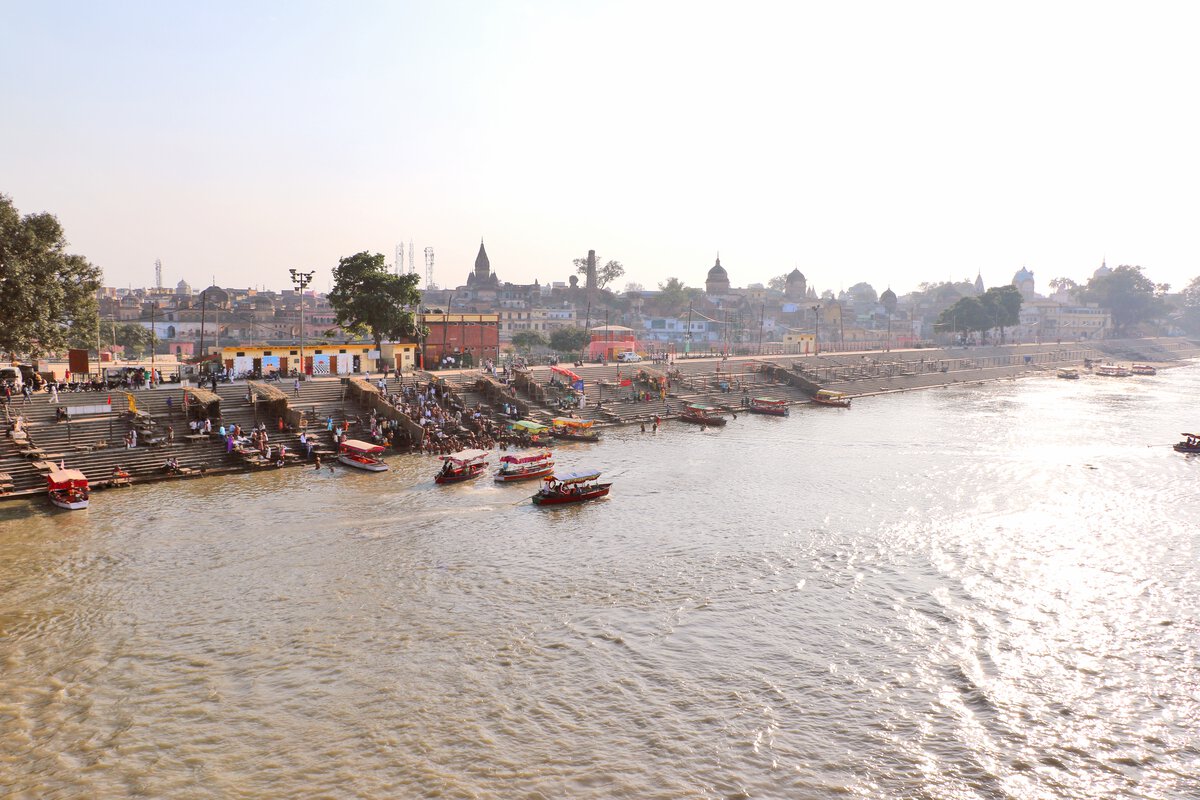
Summer in Ayodhya begins in March and lasts until June, bringing the hot and dry weather typical of North India. Temperatures can rise up to 42°C, making it one of the less favourable seasons for travel. However, for those who don’t mind the heat, visiting during this time has its own advantages.
Pros of Visiting Ayodhya in Summer
Cons of Visiting Ayodhya in Summer
Travel Tips for Visiting Ayodhya in Summer
While summer may not be the best season for everyone to visit Ayodhya, it can still be a good time for budget travellers and those looking for a quieter pilgrimage experience.
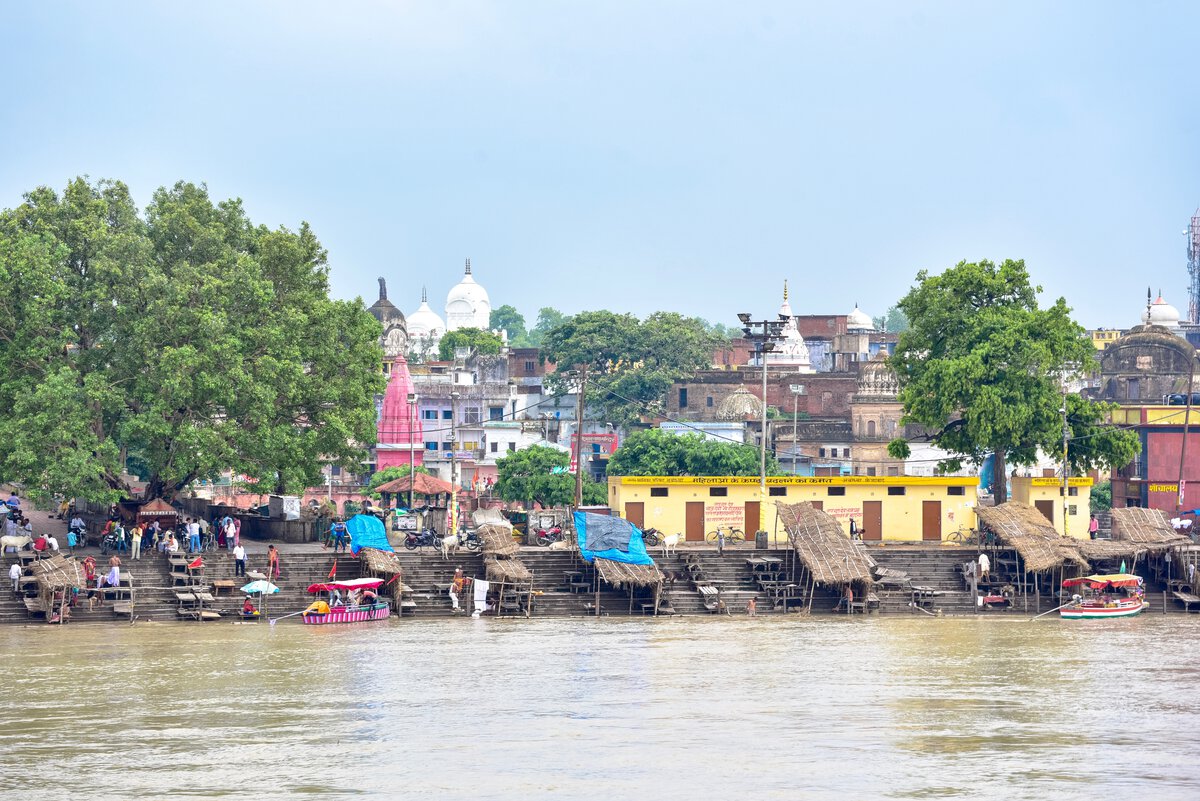
The monsoon season in Ayodhya begins in July and lasts until September, bringing moderate to heavy rainfall. While the showers bring relief from the scorching summer heat, they also come with travel challenges. However, for nature lovers, this season offers a lush, refreshing atmosphere, making Ayodhya look even more serene and beautiful.
Pros of Visiting Ayodhya in Monsoon
Cons of Visiting Ayodhya in Monsoon
Travel Tips for Visiting Ayodhya in Monsoon
When travelling to Ayodhya, the best time to visit might not be monsoon for everyone. But this season offers a peaceful and scenic experience for those who enjoy the rainy season. If you don’t mind carrying an umbrella and walking carefully, you’ll find Ayodhya’s spiritual charm just as enchanting in the monsoon season.
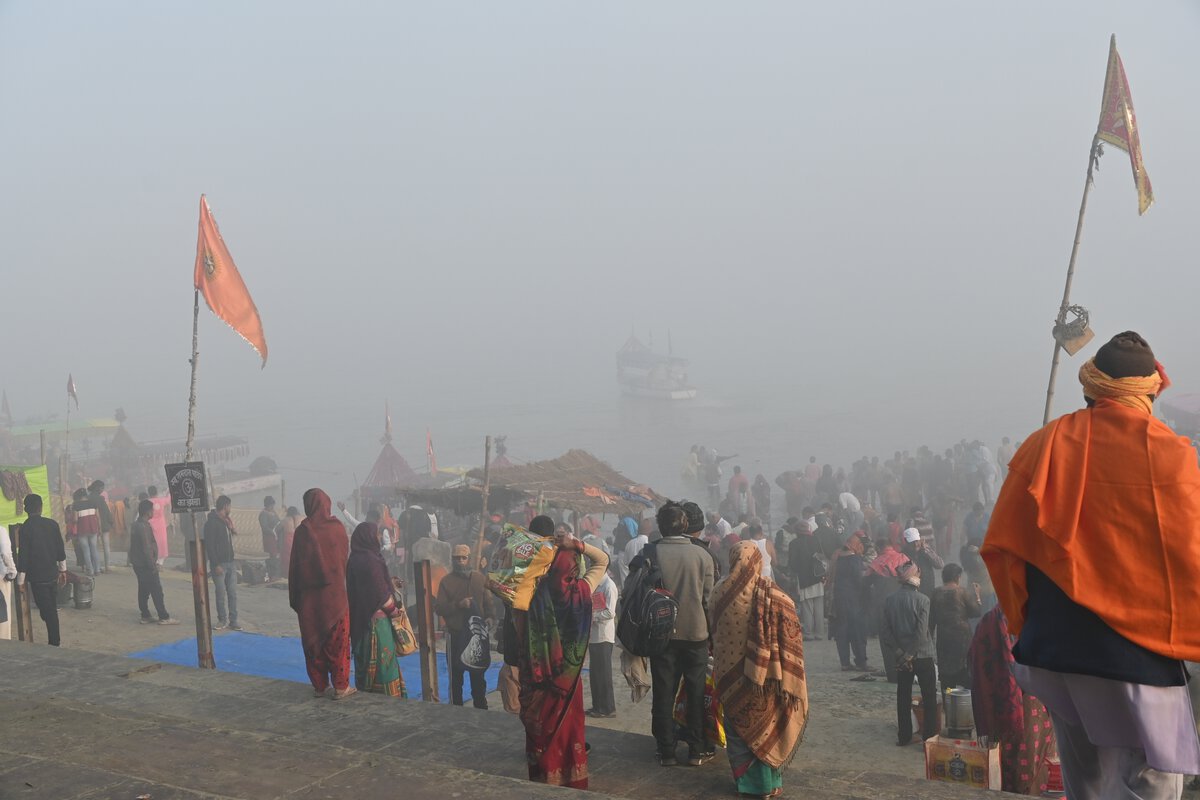
Winter is considered the best time to visit Ayodhya, as the weather remains cool, pleasant, and ideal for exploring the city’s spiritual and historical sites. Temperatures range from 8°C to 25°C, making it the most comfortable season for sightseeing, temple visits, and outdoor experiences.
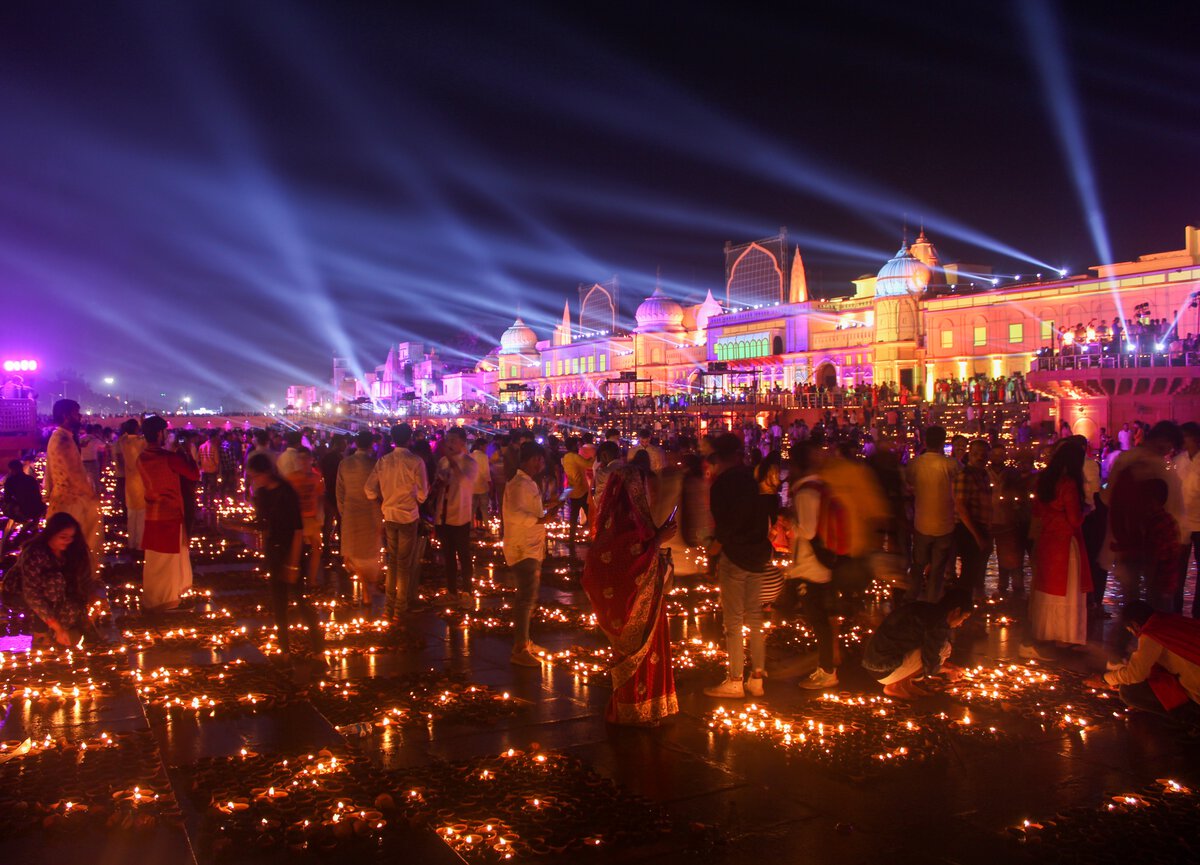
Ayodhya is not just a place of historical and religious significance—it is also a city that comes alive during major festivals and cultural events. If you want to witness Ayodhya in its most vibrant and spiritual form, timing your visit around these festivals will enhance your experience.
One of the best times to visit Ayodhya is during Deepotsav, a grand Diwali celebration that transforms the city into a magical spectacle. The entire city is illuminated with millions of diyas (oil lamps) along the Sarayu River, breaking world records each year.
Highlights:
Ram Navami marks the birth of Lord Ram and is one of Ayodhya’s most significant religious festivals. Devotees from across the country visit temples, take holy dips in the Sarayu River, and participate in grand processions, making it the best time to visit Ayodhya.
Highlights:
Makar Sankranti is another significant festival, during which devotees take a holy dip in the Sarayu River to cleanse their sins and seek blessings. It is believed that bathing in the river on this day brings spiritual purification.
Highlights:
Kartik Purnima, celebrated 15 days after Diwali, is another major event in Ayodhya. Pilgrims gather to light lamps on the ghats and take a holy dip in the Sarayu River.
Highlights:
Ayodhya celebrates Dussehra with grandeur, as it marks Lord Ram’s victory over Ravana. This is the best time to visit Ayodhya and witness large Ram Leela performances in the city.
Highlights:
These festivals add a unique charm to Ayodhya, making it a truly unforgettable destination. However, since these events attract huge crowds, it is recommended to book your stay in advance at a comfortable place like Praveg Tent City Ayodhya Brahma Kund Resort, which offers a serene retreat after a day of festivities.
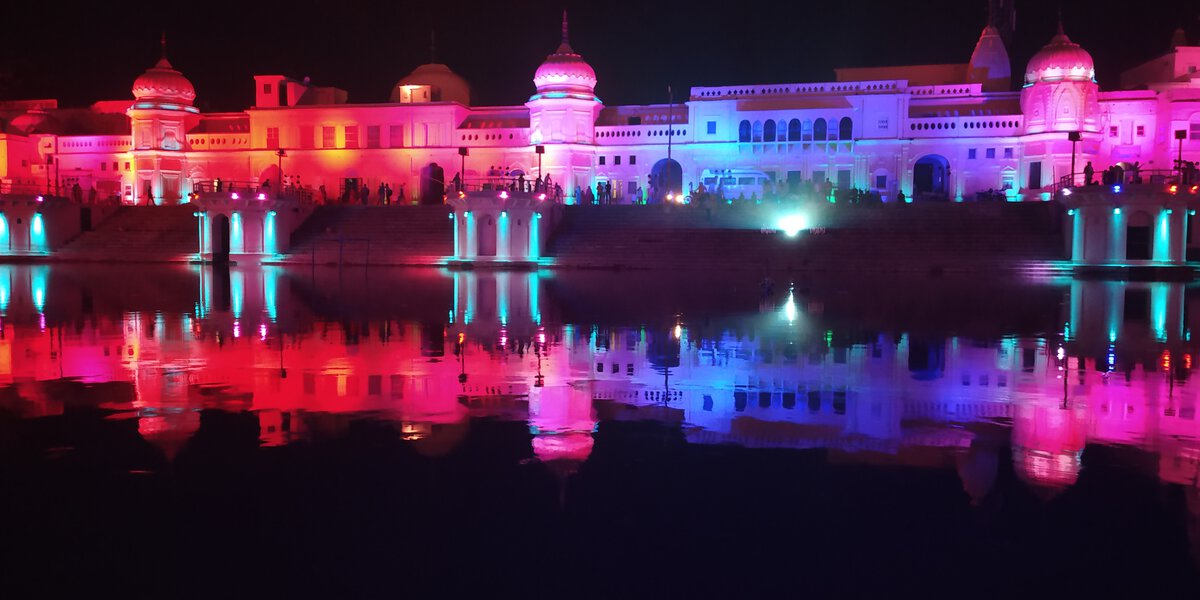
No matter when you visit, Ayodhya’s spiritual essence and rich history make it a rewarding experience throughout the year.
For a comfortable and enriching stay, Praveg Tent City Ayodhya Brahma Kund Resort by Club Mahindra is the perfect choice. Located near Ram Janmabhoomi, Hanuman Garhi, and the Sarayu River, this resort in Ayodhya offers spacious, air-conditioned tents with modern amenities.
This resort ensures a serene and hassle-free experience whether you're visiting Ayodhya in winter, during Diwali or Ram Navami, or exploring any other season to visit Ayodhya.
The best time to visit Ayodhya depends on your preference—winter (October–February) offers pleasant weather, while festivals like Deepotsav and Ram Navami bring the city to life. To make your journey truly hassle-free, consider a Club Mahindra membership, ensuring a comfortable stay not just in Ayodhya but in 140+ stunning destinations across India and abroad. Experience unmatched hospitality and premium stays wherever you travel.
Mahindra Holidays & Resorts India Ltd. (MHRIL), a part of Leisure and Hospitality sector of the Mahindra Group, offers quality family holidays primarily through vacation ownership memberships and brings to the industry values such as reliability, trust and customer satisfaction. Started in 1996, the company's flagship brand ‘Club Mahindra’, today has over 290,000 members , who can holiday at 140+ resorts in India and abroad.